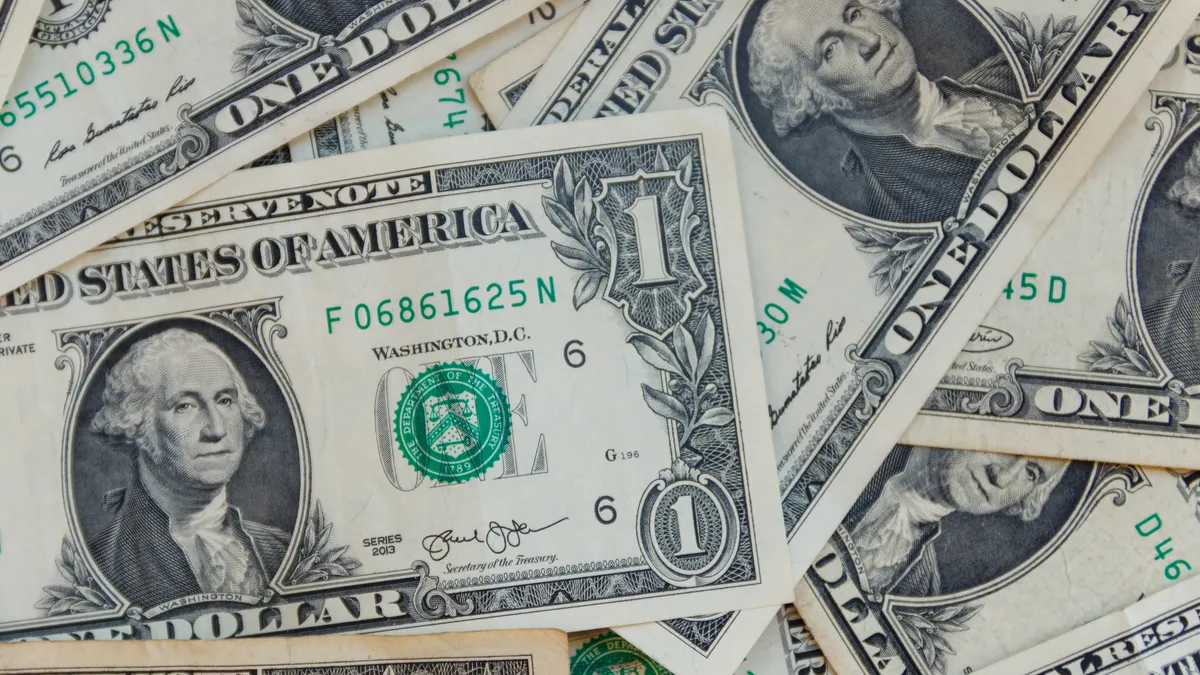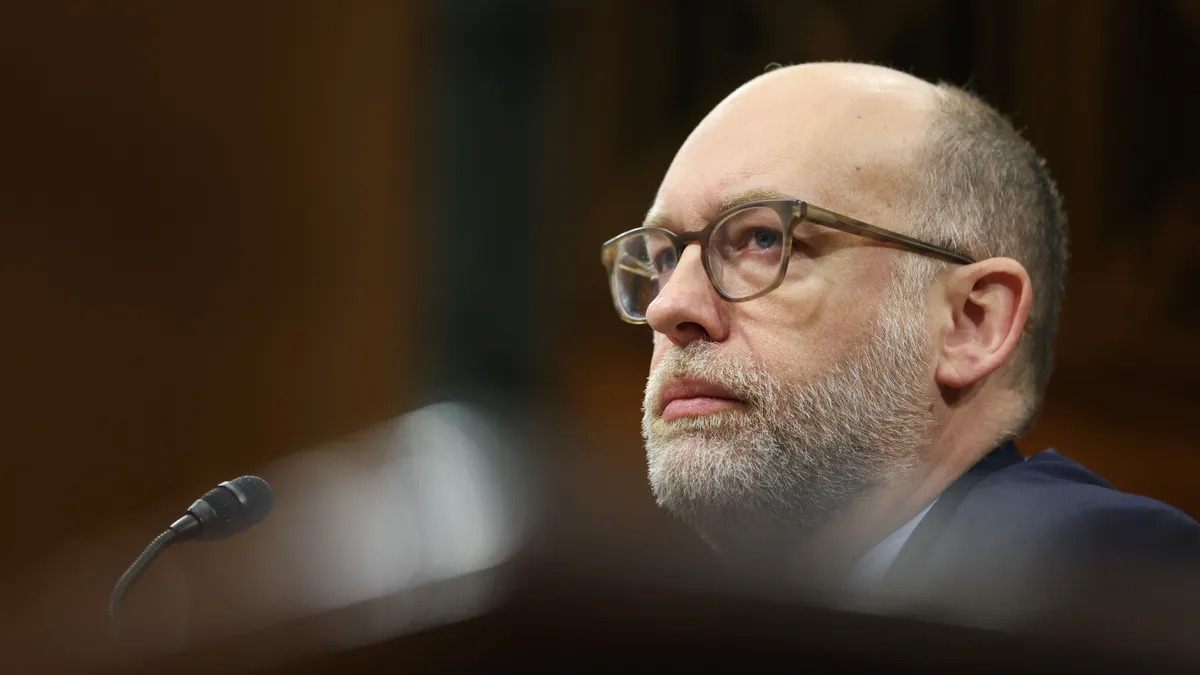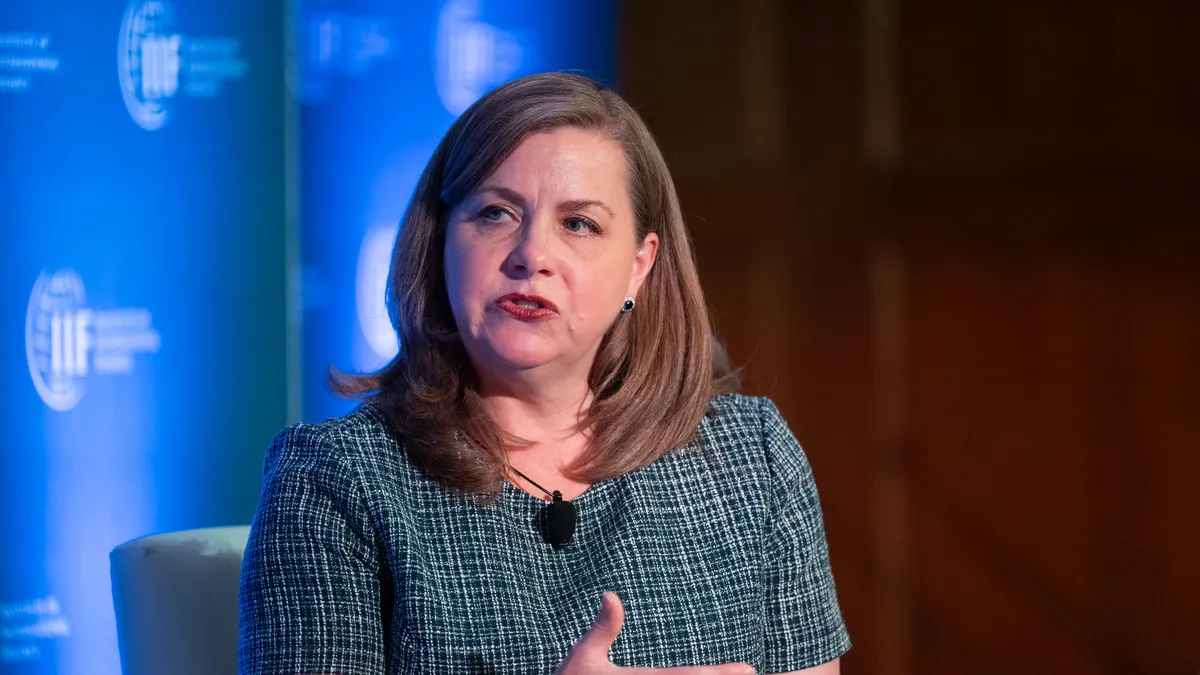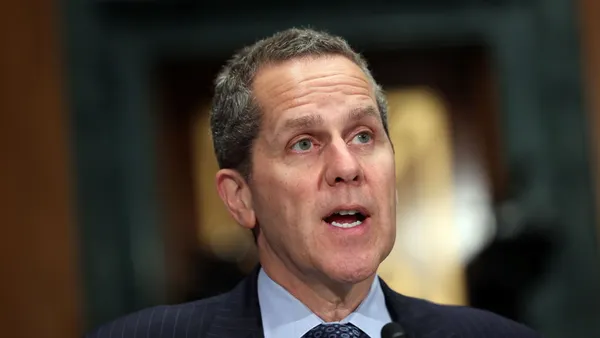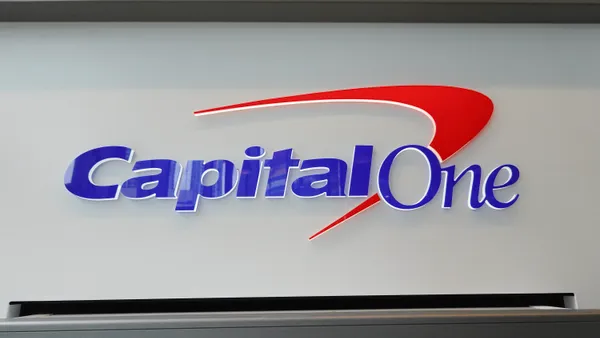Dive Brief:
- The Federal Deposit Insurance Corp. (FDIC), National Credit Union Administration (NCUA) and Office of the Comptroller of the Currency (OCC) should establish outcome-based performance measures to track progress toward decreasing the unbanked population, according to a Government Accountability Office (GAO) report made public Monday.
- Roughly 5.4% of U.S. households were unbanked in 2019, meaning they did not have any checking or savings accounts with banks or credit unions, the FDIC found. However, that proportion is higher among lower-income, less-educated and nonwhite households.
- The GAO estimates an additional 17.9% of U.S. households are underbanked, meaning that although they have opened at least one checking or savings account, they use alternative financial services like check cashing or payday loans, which are often more costly than banking services.
Dive Insight:
The GAO found that while many agencies are trying to increase Americans’ financial inclusion, they simply aren’t collecting enough data to know whether their efforts are having the intended effect.
Monday's report recommends the OCC implement performance measures that quantify the impact of key efforts, such as Project REACh, on increasing access to financial services. Collecting such data would demonstrate and measure results, and provide useful information for regulatory decision-making, the GAO said.
The proportion of unbanked and underbanked households is at a 30-year low, the GAO found. And during that time, lower-income, less-educated and nonwhite households have made the largest strides in increasing their access to banking services, it said.
For example, in 1989, only 56% of Black households in the U.S. had opened a checking or savings account. That figure grew to 86% in 2019. By comparison, 89% of white households had a checking or savings account in 1989, and 95% in 2019.
Some of the driving reasons consumers might avoid using banking services include lack of money, unexpected or high bank fees, distrust of banks and privacy concerns.
The GAO analysis outlines stark divisions along differences in income, education levels and race.
About 25% of American households taking home less than $15,000 are unbanked and 22% are underbanked, the agency said, compared to 2% and 18%, respectively, of American households earning more than $30,000 per year.
Of American households with no high school degree, 22% are unbanked and 26% are underbanked. In contrast, 5% of American households with a high school degree (or more) are unbanked, and 18% underbanked, the agency found.
About 16% of Black Americans are unbanked and 31% are underbanked, the agency found. That compares with 14% and 30%, respectively, of Hispanic Americans, while 3% of white Americans are unbanked, and 14% are underbanked.
Actions taken by regulators can have a positive or negative effect on the cost and availability of banking services, affecting Americans’ access to and usage of such services, according to the report.
Regulations that require consumers to opt in to overdraft protection may reduce the amount of fees some consumers pay, for example. But on the flip side, regulations that impose limits on the interchange fees banks charge may compel banks to raise checking account fees to offset that revenue loss, the agency said.



